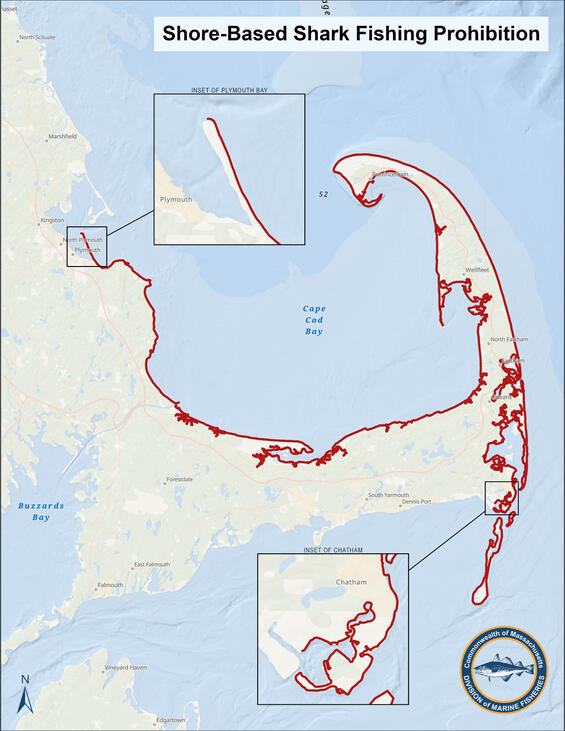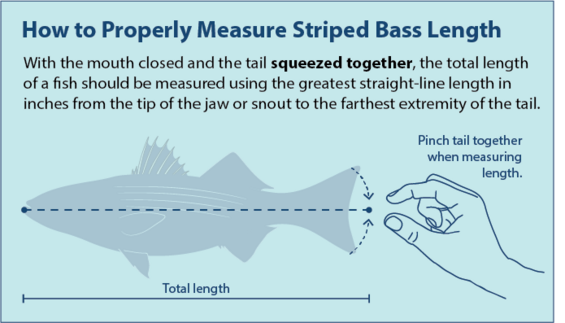Shore-Based Shark Fishing

- DMF is defining shore-based shark fishing as any rod and reel fishing that uses a metal or wire leader exceeding 18" length in combination with a hook where the gap (straight line from point to shank) is greater than 5/8".
- Shore-based shark fishing (as defined above) is prohibited from the northernmost tip of Plymouth Point around the shoreline of Cape Cod Bay and the eastern shore of the Outer Cape, including Chatham Harbor and all of Monomoy Island. This includes wade fishing and fishing from structures attached to the shore (e.g., jetties, piers, docks). You may shore fish in this area provided your leader length is less than 18" or your hook gap is less than 5/8".
- Chumming is prohibited from sunrise to sunset when shark fishing from shore.
Mechanized Deployment of Bait
When rod and reel fishing from shore you are not allowed to use motorized, propulsion, or remote-controlled devices to deploy baits. Deploying baits with kites, kayaks, or other similar means remain permitted. Additionally, the use of power reels is permitted since they retrieve baits but do not aid in deploying them over distance.
New Limits for Atlantic Bonito and False Albacore
The Division of Marine Fisheries has enacted first-ever size and possession limits for both false albacore (aka little tunny) and Atlantic bonito. The minimum size limit for both species is 16-inches. Additionally, retention is limited to no more than 5-fish per person of both species combined. These new limits apply universally to all persons whether commercially or recreationally fishing. However, commercial weir operators and mechanized mackerel jig fishers who may encounter some bycatch of these fish during their routine operations are exempt from the possession and size limits as sorting and discarding the bycatch would be unduly burdensome.
Measuring striped bass for compliance with size limits
Beginning in 2025, the method of measuring a striped bass for compliance with recreational and commercial size limits has been modified. Fishers must now pinch the tail together when measuring a striped bass to confirm it is of legal harvestable size. All size limits for striped bass are in total length. Total length is to be measured as the greatest straight-line length (not over the curve of the body) in inches from the anterior most tip of the jaw or snout, with the fish’s mouth closed, to the farthest extremity of the tail, with the tail squeezed together.

Previously, fishers could either pinch the tail or leave it fanned out when measuring the length of a striped bass. Requiring the tail to be pinched establishes a clear and consistent technique for measuring striped bass for compliance with both minimum and maximum size limits. Data collected by the Division indicates that manipulating the tail can alter the measured length of a striped bass by over an inch. This revision upholds the intended conservation benefits of the management measures and supports their enforceability.